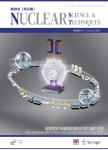Stepped-up development of accelerator mass spectrometry method for the detection of ^(60)Fe with the HI-13 tandem accelerator
作者机构:China Institute of Atomic EnergyP.O.Box 275(10)Beijing 102413China College of ScienceSouthern University of Science and TechnologyShenzhen 518055China School of PhysicsXi’an Jiaotong UniversityXi’an 710049China
出 版 物:《Nuclear Science and Techniques》 (核技术(英文))
年 卷 期:2024年第35卷第4期
页 面:136-143页
核心收录:
学科分类:07[理学] 08[工学] 070401[理学-天体物理] 082701[工学-核能科学与工程] 0827[工学-核科学与技术] 0704[理学-天文学]
基 金:supported by the National Natural Science Foundation of China(Nos.12125509,12222514,11961141003,and 12005304) National Key Research and Development Project(No.2022YFA1602301) CAST Young Talent Support Plan the CNNC Science Fund for Talented Young Scholars Continuous support for basic scientific research projects
主 题:Accelerator mass spectrometry Wien filter Isobar separation Supernovae Chang'e-5 lunar samples
摘 要:The Moon provides a unique environment for investigating nearby astrophysical events such as *** samples retain valuable information from these events,via detectable long-lived“fingerprintradionuclides such as^(60)*** this work,we stepped up the development of an accelerator mass spectrometry(AMS)method for detecting^(60)Fe using the HI-13tandem accelerator at the China Institute of Atomic Energy(CIAE).Since interferences could not be sufficiently removed solely with the existing magnetic systems of the tandem accelerator and the following Q3D magnetic spectrograph,a Wien filter with a maximum voltage of±60 kV and a maximum magnetic field of 0.3 T was installed after the accelerator magnetic systems to lower the detection background for the low abundance nuclide^(60)Fe.A 1μm thick Si_(3)N_(4) foil was installed in front of the Q3D as an energy *** particle detection,a multi-anode gas ionization chamber was mounted at the center of the focal plane of the ***,an^(60)Fe sample with an abundance of 1.125×10^(-10)was used to test the new AMS *** results indicate that^(60)Fe can be clearly distinguished from the isobar^(60)*** sensitivity was assessed to be better than 4.3×10^(-14)based on blank sample measurements lasting 5.8 h,and the sensitivity could,in principle,be expected to be approximately 2.5×10^(-15)when the data were accumulated for 100 h,which is feasible for future lunar sample measurements because the main contaminants were sufficiently separated.




